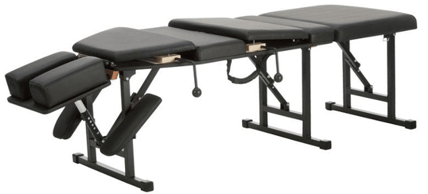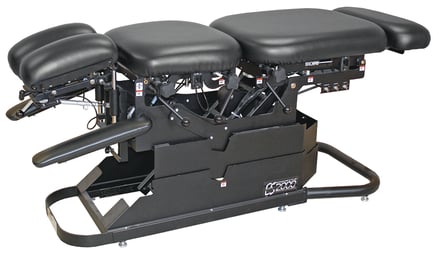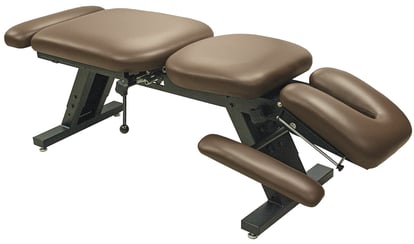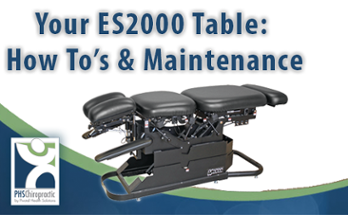First impressions are made within the first few seconds of meeting a new person or being in a new environment, and patients, whether new, prospective, or current, form an impression of your office based on a thousand small details that together set the tone of your clinic environment.
One of these details is your adjusting tables. The appearance, condition and quality of your tables  contribute to a patient’s overall impression of your clinic. Your tables are your primary tool where you do your work, apply your trade, make your adjustments and apply your health care deliverable. A high-quality table not only gives a great first and lasting impression, but it also creates the ability for the you, the doctor, to do your best work and get the best clinical results. Tables are a big deal in our profession!
contribute to a patient’s overall impression of your clinic. Your tables are your primary tool where you do your work, apply your trade, make your adjustments and apply your health care deliverable. A high-quality table not only gives a great first and lasting impression, but it also creates the ability for the you, the doctor, to do your best work and get the best clinical results. Tables are a big deal in our profession!
Every profession has a tool of the trade. If you’re a carpenter, you’re going to invest in the very best hammer, because it’s something you’ll use all the time and you want it to be the best and most efficient hammer you can get. It’s the same when it comes to choosing your
adjusting tables
Years ago in my practice, I had one of my most significant growth leaps after investing in new tables. I had a start-up practice and a very shoestring budget, and had purchased the best tables I could afford at the time. Unfortunately, they weren’t at the right height; they weren’t appropriate to my technique. It dawned on me that if my tables are one of my tools, I needed to make the investment and get the very best, highest-quality tables. Once I did this, my practice grew, and here’s why: I was a better technician. I could give a better adjustment when my tables matched my techniqueparameters. It also helped my physical stamina. Previously, when I spent the days bending over tables that were not at the inappropriate height for me, I was fatigued by the end of the day. I was bending too much and starting developing backaches - things we encourage our patients to avoid doing. When I invested in tables that were the right height for my technique, I could produce a more efficient adjustment on my patients with less stress and strain on my body, and therefore I was able to serve more patients.
technique. It dawned on me that if my tables are one of my tools, I needed to make the investment and get the very best, highest-quality tables. Once I did this, my practice grew, and here’s why: I was a better technician. I could give a better adjustment when my tables matched my techniqueparameters. It also helped my physical stamina. Previously, when I spent the days bending over tables that were not at the inappropriate height for me, I was fatigued by the end of the day. I was bending too much and starting developing backaches - things we encourage our patients to avoid doing. When I invested in tables that were the right height for my technique, I could produce a more efficient adjustment on my patients with less stress and strain on my body, and therefore I was able to serve more patients.
When tables have rips, tears, or broken pieces, patients notice this. They notice the aesthetics of the tables. If you have to make an excuse for your tables, it’s not only time to invest in new ones, but you probably should have done so long ago. People notice the details. Think about the last time you visited a restroom at a restaurant, and the cleanliness of the restroom was sub-par. This affects your perception of the restaurant as a whole, right? You might equate that level of cleanliness to the level of cleanliness in the kitchen and treatment/preparation of your food. You want the appearance of your tables to indicate the highest level cleanliness, quality and efficiency. 
It’s also crucial that all of your tables look exactly alike. This is important because tables of different makes/models, colors, and newness can create what we call a “flow-stopper” - something that interferes with your ability to move seamlessly from patient to patient. Patients might even prefer one table to another, and this creates a barrier to flow. You want to be able to provide patients with the peace of mind that all of the tables are exactly the same, and they will get the exact same results
no matter which table is used.
So, invest in the things that mean the most to your trade and the tools you use the most. The highest-quality tables will be worth your investment and will pay off dividends throughout your entire career.


